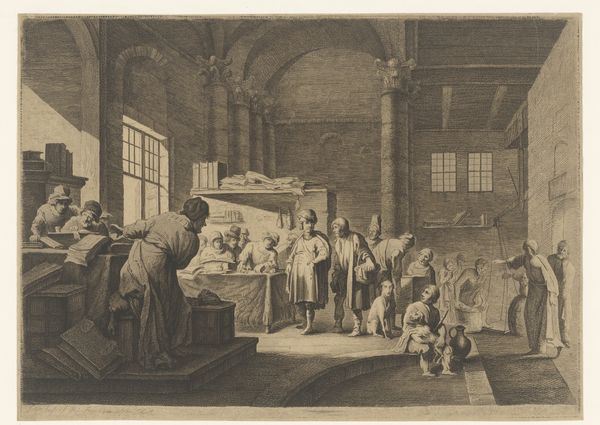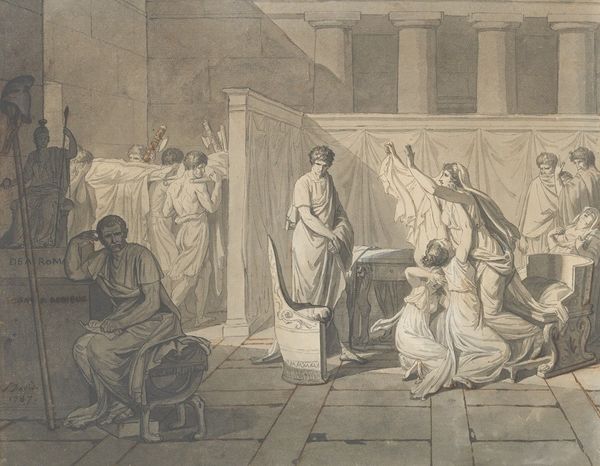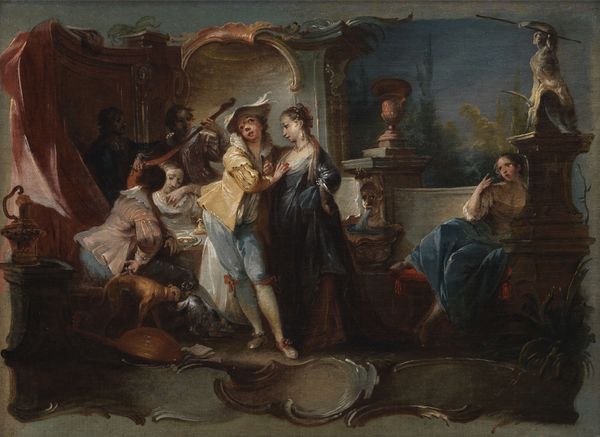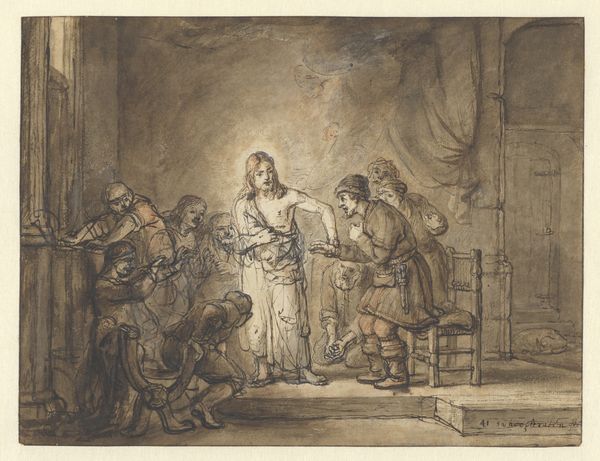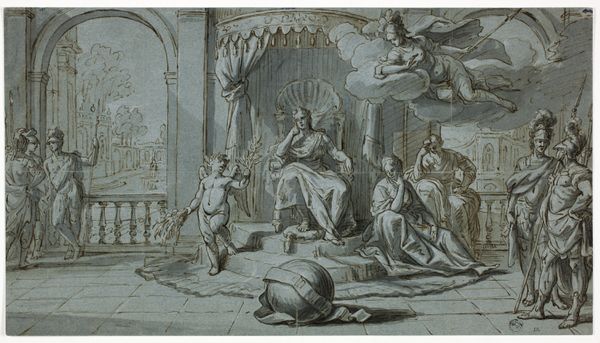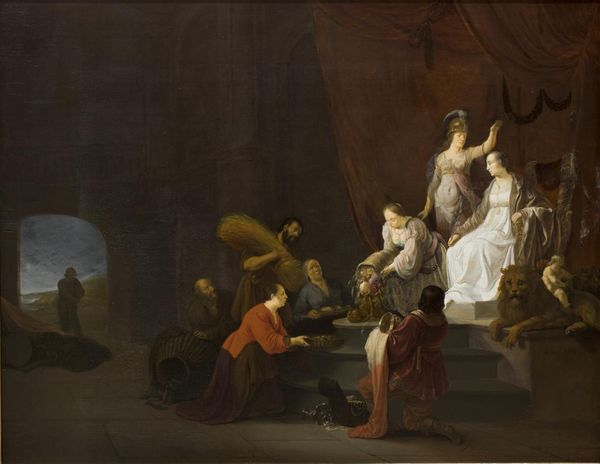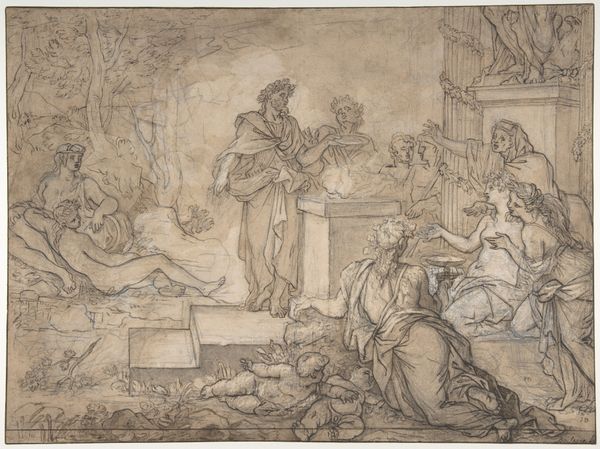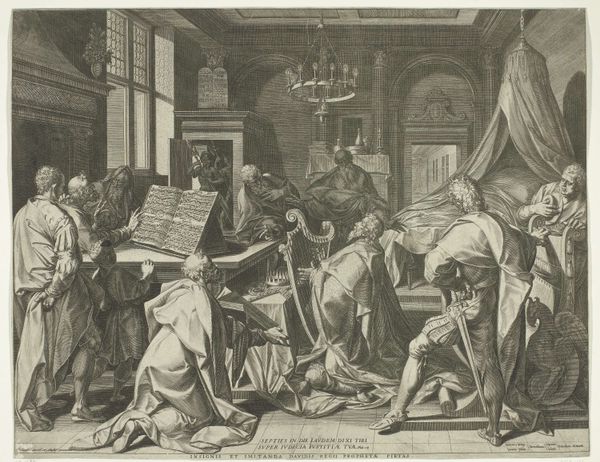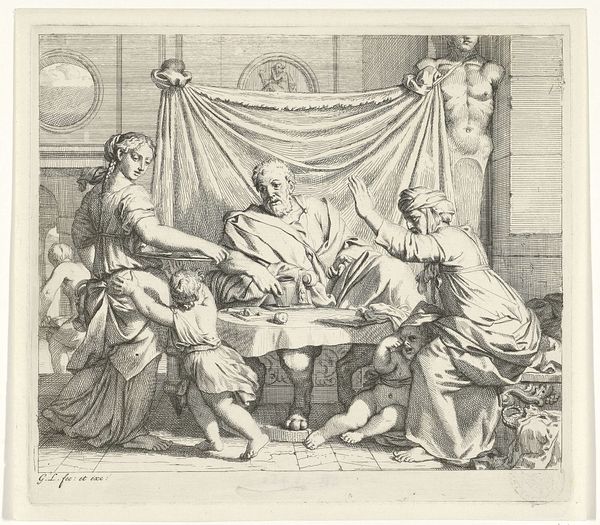
drawing, watercolor
#
drawing
#
neoclassicism
#
landscape
#
figuration
#
watercolor
#
genre-painting
#
academic-art
#
watercolor
Dimensions: height 450 mm, width 525 mm
Copyright: Rijks Museum: Open Domain
Editor: This is “Modeltekenen in een oud gebouw,” or “Figure Drawing in an Old Building,” a watercolor drawing made sometime between 1763 and 1800 by Jacobus Johannes Lauwers. There's a real sense of atmosphere in here; it feels both grand and intimate at the same time. I’m intrigued by the depiction of the artist's studio. What social factors might have shaped this scene? Curator: The scene portrays an art academy, deeply embedded within the rise of Neoclassicism. Observe the idealization of the human form, referencing classical Greek sculpture. The setting, a decaying yet palatial space, signals the cultural authority sought by the arts at this time. Note the presence of both men and women students - this period saw a slow opening up of artistic training, however access often depended on social class. Editor: So, the classical references weren’t just aesthetic, but also symbolic of a specific kind of institutional ambition? Curator: Precisely. The choice of a dilapidated 'old building' may also speak to a cultural reclamation – positioning the academy as reviving the glories of the past, giving it a sense of history and legitimacy. Do you see how the composition is structured to invite viewers into the process of art making itself? This image subtly promotes the Academy and their approach to artistic education. Editor: I hadn’t considered that it could be promoting the academy itself. Now that I look at it, it does feel almost staged, with a sense of self-importance. The neoclassical style with this institutional push really shaped the art world of the era, didn't it? Curator: Indeed. It’s vital to analyze how cultural institutions shape not only what art is produced, but also its role and reception in society. The academic system was central to that in this era. Editor: It’s fascinating how a single drawing can reveal so much about the power structures within the art world at the time. Curator: Absolutely. It is the constant dialogue between art, artist, and institutions that builds our understanding.
Comments
No comments
Be the first to comment and join the conversation on the ultimate creative platform.

